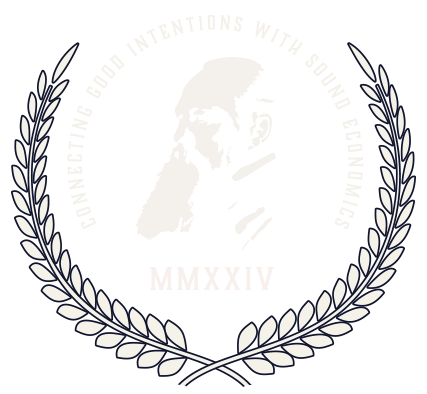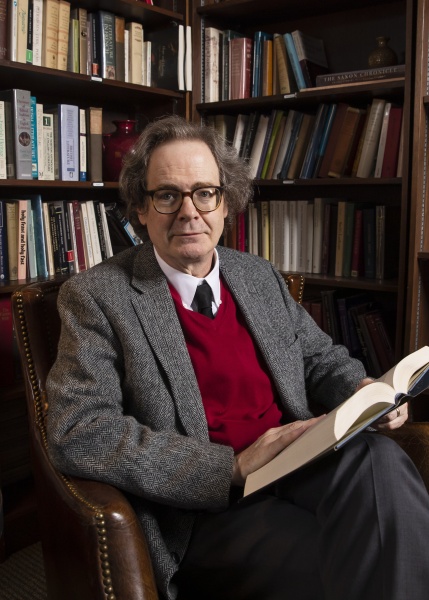No authentic portrait of the author of Don Quixote exists. Studying this gargantuan figure and his omnivorous relish for life, we are led to wonder what canvas could contain him. He takes us far from the world-weary aesthete among his books and absinthe: “Living? Our servants will do that for us” (Villiers). Cervantes did his own living, and Don Quixote’s translator Tom Lathrop is right: “You might be surprised at how much Cervantes’s swashbuckling life affected this work.” Swashbuckling. The adjective derives from swashbuckler, meaning one who beats his sword against his own or his enemy’s shield. It’s not the first word that comes to mind when discussing the lives of English and American writers. Dr. Johnson? Clubbable, tough-minded, a wonderful talker, but no swashbuckler. William Shakespeare? Never spent a day in jail. What about Geoffrey Chaucer, James Baldwin, or F. Scott Fitzgerald? It just doesn’t fit. There’s too much swagger in it, with a charmless hint of dubious manners, low company, and the halitotic reek of garlic.
Miguel Cervantes’ classic is believed to be the first modern novel, one with distinctive attributes and irresistible appeal. Who have been transmitters of the “Cervantine spirit” through the centuries? And do they live among us today?
Even so, let us seek out a couple of comparisons to try and take Cervantes’ measure. Since the novel’s rise in English, which we may conveniently date to Daniel Defoe’s Robinson Crusoe (1719), one tends to think of the middle class as the nursery of novelists. But with Cervantes in mind, we must scour the field for the exceptions, for the scrappers and fighters among whom Dickens wears the honorary crown. Dickens’ boyhood degradation, his three-year ordeal in a blacking factory due to his father’s financial ruin, had a happy ending. I have no desire to disparage Dickens or to sully his fame. But, fortunately for us all, Dickens was back in school at the age of 15. At 24, he serialized his first (and most Cervantine) novel, The Pickwick Papers, affirming, in his fashion, the middle-class virtues that Defoe had emblazoned on England’s national consciousness in the previous century.
What about Catholic novelists? Tolkien lost his father at the age of three—an event that erased the family’s income. In consequence, the Tolkiens relocated to England from what is now the Republic of South Africa. At the age of 12, he lost his mother, after she alienated her kin and their support by converting to Roman Catholicism. The future author retained his middle-class footing by dint of hard work and brainpower, completing his Oxford degree before serving as a lieutenant at the Battle of the Somme, where he witnessed horrors that clung to his pen. In 1925, after a professorial stint at the University of Leeds, he returned to Oxford permanently, still a young man and well-established in his early 30s.
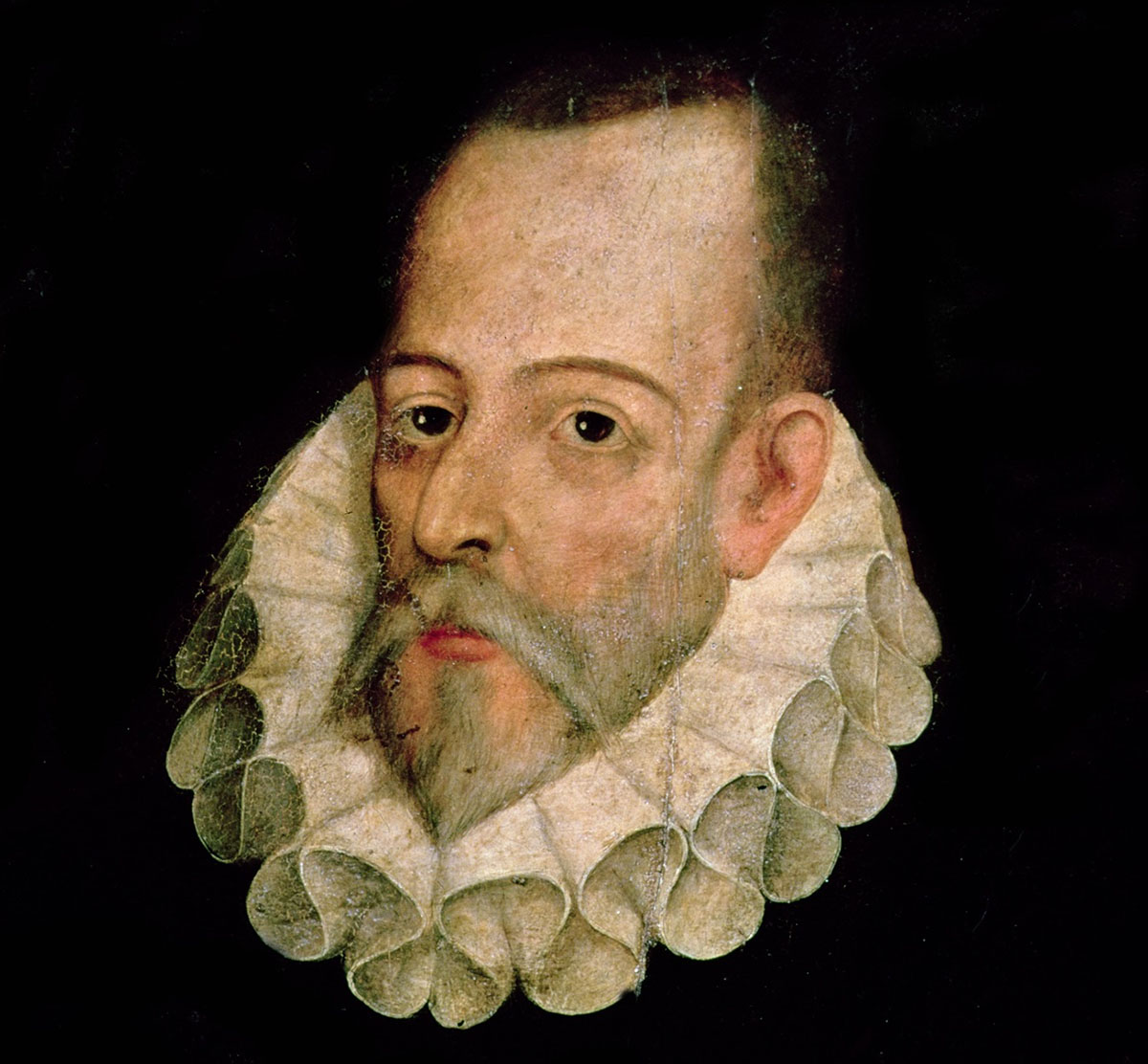
These are admirable stories, which remind us that novelists do not normally clamor for victim status or start out as “creative writing majors.” Their real school is the world. It is notable, though, that, while both Dickens and Tolkien overcame trauma, neither man seized on madness as his great theme. Neither went mad. Madmen do not loom large in their writings. Mr. Dick is too childlike to be a full-blown madman, and Gollum is a schizophrenic monster.
What can we say about Cervantes? The likelihood of his Jewish ancestry, that his family descended from Jewish converts to Catholicism, merits our attention due to a series of nauseating decrees issued by the Spanish crown concerning racial status. The 1609 exile of the Moriscos (Muslim converts) from Spain, like Sancho Panza’s proud identity as an “Old Christian,” is writ large throughout Don Quixote. For our purposes, the point may simply be that the Catholic novel gets its start in a Mediterranean milieu, a multiethnic milieu that returns in novels by G.K. Chesterton, Evelyn Waugh, Walker Percy, and John Kennedy Toole, which stand in the tradition of Cervantes. And as was the case for Cervantes, the moral complexity of this demographic stew demands a moral response.
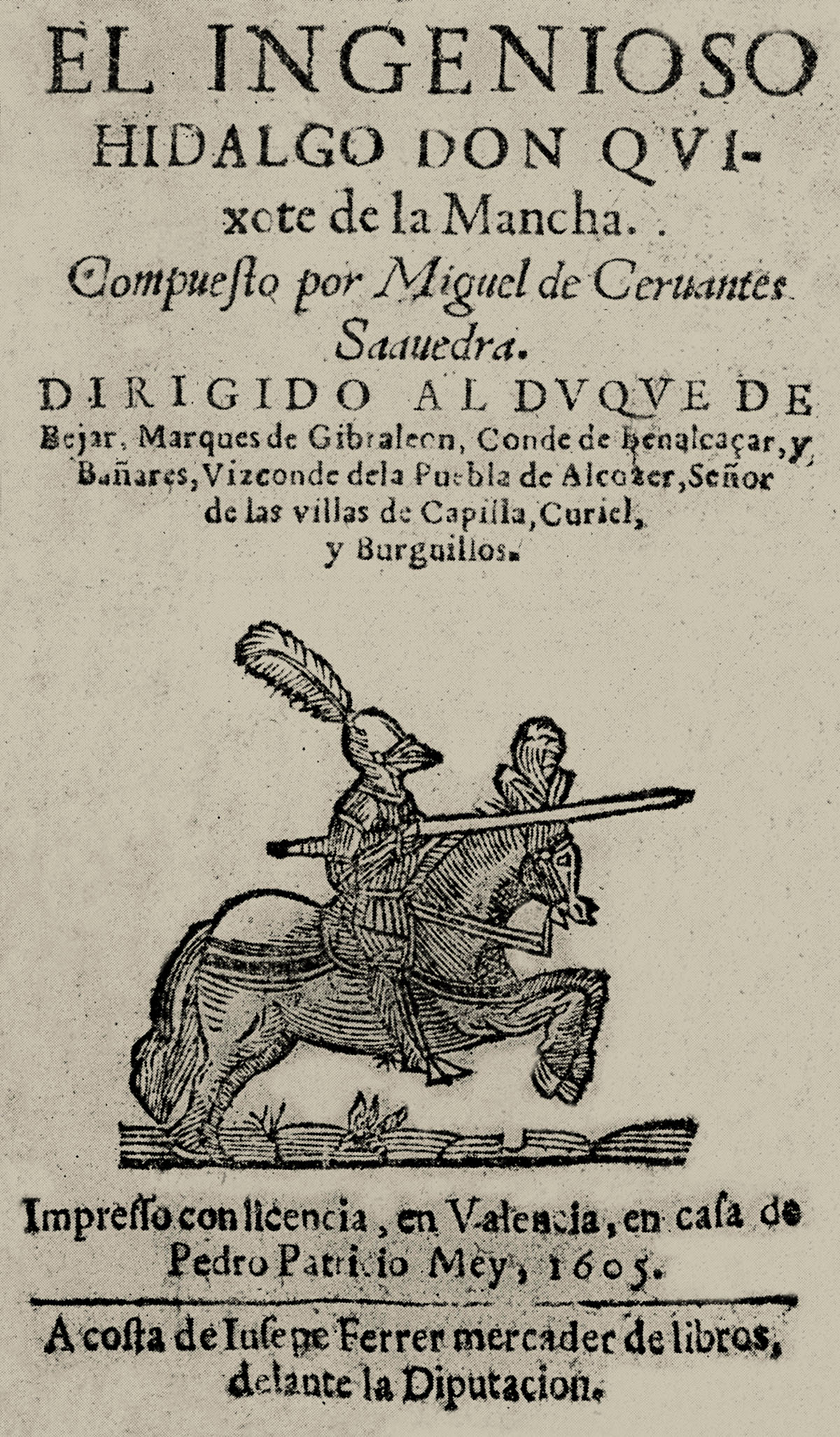
Lepanto and Its Aftermath
The son of a barber in the gory days of barber-surgeons, Cervantes was born not far from Madrid in 1547. In the same year, the first of the “purity-of-blood” decrees appeared. The boy who would write Don Quixote grew up in poverty and moved around a lot. A record exists of him in 1568–69, studying in Madrid under a humanist priest. How he got there is a mystery. Shortly thereafter, having injured a rival in a duel (the arrest warrant called for cutting off his right hand), he fled Spain and found refuge in Rome, in the household of a young cardinal. After his military career and later imprisonment among Christian slaves in Algiers, he crisscrossed the Kingdom of Granada as a tax collector, only to be thrown into debtor’s prison when his banker lost the state’s money. Here is the famous self-portrait from the Prologue to his Exemplary Novels (1613), as translated by B.W. Ife:
This man you see here, with aquiline face, chestnut hair, smooth, unwrinkled brow, joyful eyes and curved though well-proportioned nose, silvery beard which not twenty years ago was golden, large moustache, small mouth, teeth neither small nor large, since he has only six, and these are in poor condition and worse alignment; of middle height, neither tall nor short, fresh faced, rather fair than dark; somewhat stooping and none too light on his feet; this I say, is the likeness of the author of … Don Quijote de la Mancha. … He is commonly called Miguel de Cervantes Saavedra. He was many years a soldier, five and a half a prisoner, when he learned patience in adversity. He lost his left hand in the naval battle of Lepanto, from a blunderbuss wound, which, although it looks ugly, he considers beautiful, since he collected it in the greatest and most memorable event that past centuries have ever seen or those to come may hope to see, fighting beneath the victorious banners of the son of that glorious warrior, Charles V of happy memory.
Don Quixote is long, exuberant, picaresque, satirical, parodic, violent, and grotesque.
When shepherds with their slingshots repay Don Quixote for killing seven of their sheep, he loses “three or four teeth and molars.” Cervantes had watched his barber-surgeon father in action, but, as we can see, the painful reality was more intimate. His years in captivity came after his heroics at the Battle of Lepanto, the civilizational clash that most recalls Salamis, because on its bloody hinges history truly turned. Five years later, he was on board a ship captured by Barbary pirates. Cast into an Algiers prison, he “learned patience in adversity” until, after another span of five years, a mendicant order called the Trinitarians ransomed him from his Muslim captors. These are the hard facts, as unsettling to our modern sensibilities as they are intrinsic to the action of Don Quixote.
And yet, Cervantes in his self-portrait does not seem the least put out. By his own account, his eyes are “joyful.” If anything, he seems pleased with himself and his hard-earned fame. He accepts the indignities of age with magnanimity. He glories in his sacrifice at Lepanto. And he lauds the late Don Juan of Austria, anticipating the closing lines from Chesterton’s “Lepanto”: “Vivat Hispania! / Domino Gloria! / Don John of Austria / Has set his people free!” The stakes at Lepanto were exceptionally high, in a way that is nowadays unfamiliar and suspect.
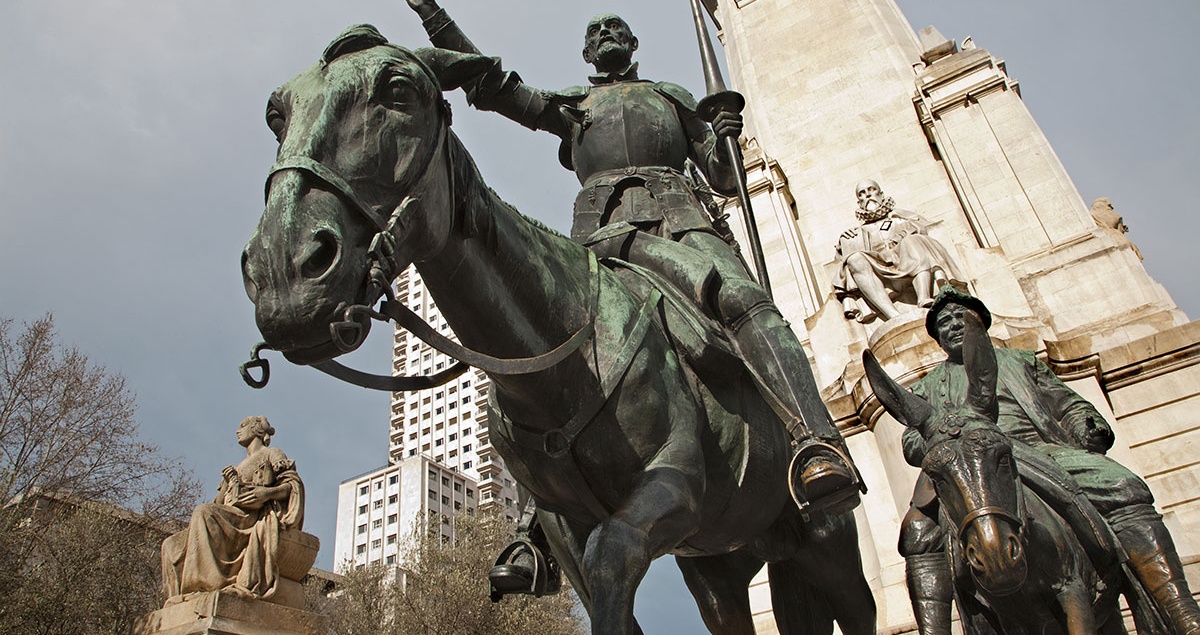
Don Quixote was published in two parts, in 1605 and 1615. The work is long, exuberant, picaresque, satirical, parodic, violent, and grotesque. It is infinitely inventive and unsparing in its designs on the funny bone. At the same time, it is rich in pathos, unsentimental, and elevated in its tragic dignity. Here we have a book for the ages! The unreliable narrator, working largely from the manuscript of an Arab historian named Cide Hamete Benengeli (Señor Eggplant), recounts the adventures of a middle-aged gentleman who loses his mind reading chivalric romances. Alonso Quixano adopts the name of Don Quixote, dresses up in ridiculous armor, mounts his old nag, Rocinante, and sets off from his village in La Mancha in central Spain. Haggard of mien, he is accompanied by the shorter Sancho Panza, a belly of a man and an unpredictable compound of simplicity and sagacity. Quixote is determined to revive the lost tradition of knight errantry, and Sancho is his loyal squire, vainly warning him that those “giants” are windmills, or that a “castle” is in fact an inn on the king’s highway. Quixote’s inamorata is the beauteous and virtuous Dulcinea del Toboso, in reality a squat, unattractive peasant, though Quixote’s devotion is absolute. It is the first modern novel, the definitive departure from the long line of chivalric romances with their fantastic Merlins and lovelorn Lancelots, a medieval genre that Cervantes renders sublimely ridiculous. It follows that the origin of the novel is steeped in satire and irony.
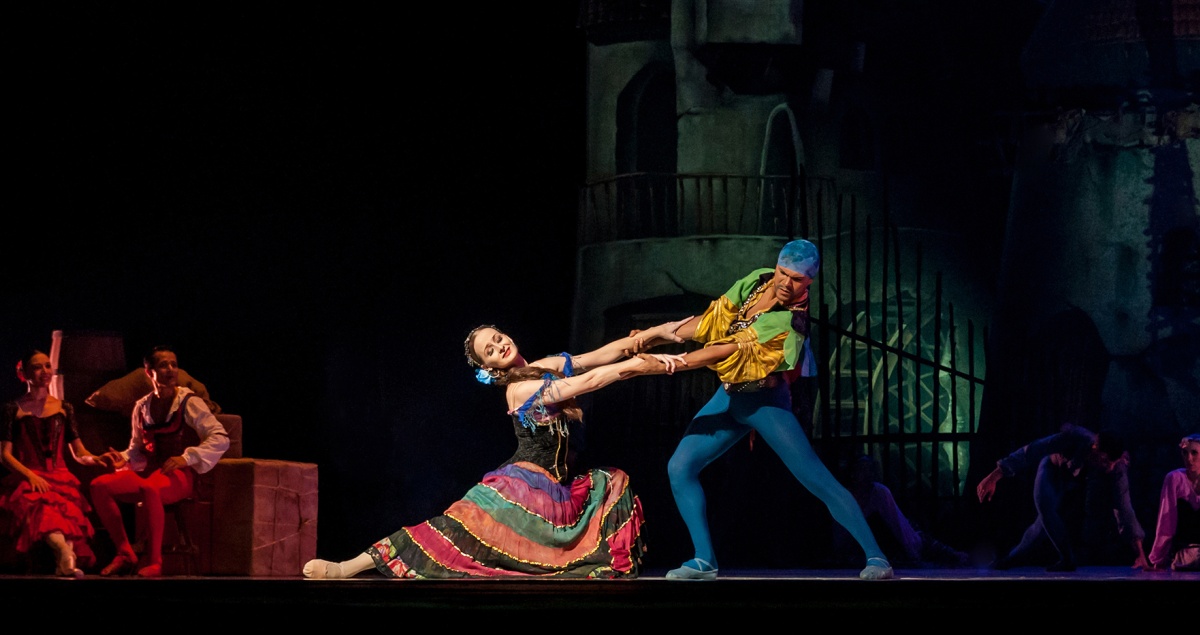
Cervantes’ Christianity is expressed in his fiction, but its nuances pose a challenge. Cervantes was not an atheist avant la lettre, clairvoyantly anticipating the glories of Richard Dawkins. Like his closest predecessor, Rabelais, he was an Erasmian Catholic Christian. The prolific writings of Erasmus, although the first Roman Index (1559) banned them without exception, enjoyed immense popularity in Spain. Because Don Quixote is a satire, we must especially acknowledge The Praise of Folly (1511). Like Erasmus’ Folly, Don Quixote offers the priceless balm of comic relief. Cervantes regards the Spanish Inquisition with the same satirical eye Erasmus had applied to the institutions of Europe. The spiritual key, however, is that for both men the philosophy of Christ centers on the Sermon on the Mount.
The Cervantine Tradition
Before reaching into our stack of Catholic novels, we should at least glance at the Cervantine tradition that forms their background: that is, Cervantes’ worldwide impact, along with his particular influence among novelists in English. Voltaire’s picaresque satire Candide (1759) is the most important continental novel to pay homage to Cervantes. A deist, not a Catholic, Voltaire pursues his outrageous satire of theological madness (in this respect we can call him Erasmian) to arrive at a quietist moral, which recalls the dying reflections of Alonso Quixano the Good: “Il faut cultiver notre jardin” (We must cultivate our garden). Alongside Voltaire, we would at a bare minimum have to consider works by Goethe, Stendhal, Balzac, Flaubert, Dostoevsky, Galdós, Bulgakov, and, crossing the Atlantic, García Márquez and the short-story writer Borges. Britain, Ireland, and America produced novels by Fielding, Sterne, Smollett, Austen, Melville, George Eliot, Twain, Joyce, and Wodehouse that bear the Cervantine stamp, though critics disagree over what this stamp actually reveals. The topic is immense—for instance, Cervantes is often claimed as a forbear of literary modernism—and, in a sense, it is well served by a relatively narrow focus such as our own.
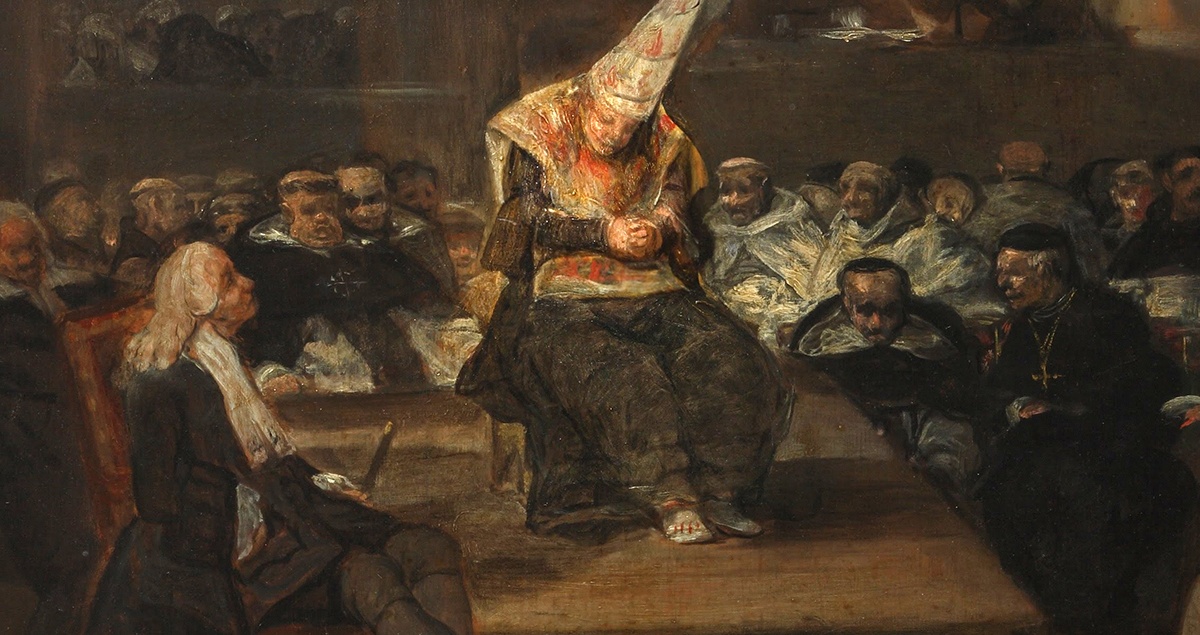
The longstanding question of Cervantes’ impact on the English novel is nowadays a dessert item in the food fight of academic politics. Despite the charges flying about of Anglophilia and anti-Hispanic racism, I agree with those who see a sea change between Don Quixote and the Protestant tradition we have identified with Defoe. The essential difference is between an external and an internal approach to reality. Don Quixote generally relies on third-person narration. Robinson Crusoe, by contrast, takes place in the first-person (“I was born in 1632 …”). The Puritan tradition of spiritual autobiography informs Defoe’s work. Robinson Crusoe keeps a diary. He has bad dreams. Don Quixote, though often compared to Hamlet, is not bathed in introspection. It is contemporary with the emergence of the art of caricature in the Carracci Academy in Bologna. It is also contemporary with Marlowe and Jonson, who brought the art of caricature to the English stage, though their reference point was, like that of Cervantes himself, the old psychology of the humors. Marlowe’s Barabas and Jonson’s Volpone are obsessive, humorous characters, two-dimensional, lacking in psychological depth, but worth more in universal human significance than a host of pseudo-Hamlets. Voltaire keeps Cervantes’ external perspective, and so by and large does Dickens, who is stupidly accused of writing caricature but whose steady artistic self-awareness appears in the audience’s response to the bad Hamlet of Mr. Wopsle: “As for example, on the question whether ’twas nobler in the mind to suffer, some roared yes, and some no, and some inclining to both opinions, said ‘toss for it.’”
And now for our stack of Catholic novels. The biggest surprise in Chesterton’s Return of Don Quixote (1927) is, if you can get your hands on it, the brilliant introduction by the late Donald Barr (father of the former attorney general), a classic of scholarly erudition and critical judgment, which graces the Ignatius Press edition (volume 7 of the Collected Works). As Barr observes, this novel faces a central snag, in that the lunacy of Chesterton’s Quixote figure, an ex-librarian turned “King-at-Arms” by the Yeatsian name of Michael Herne, is an esoteric form of political madness. In other words, Herne’s mad devotion to distributism requires too much explication from the narrator, whereas the nature of Don Quixote’s madness is self-evident. The Return of Don Quixote achieves a scattershot of strong impressions, reminding us that Chesterton was a gifted illustrator. His love of acrobats emerges when an English gentleman “turned a cartwheel for the top of the cab,” a feat directly reminiscent of Don Quixote. The gentleman in question, a society wag named Douglas Murrel, assigns himself the role of Sancho, and he and Herne depart the scene of their aborted political revolution to pursue adventures in the country. The Catholic dimension, which is largely architectural, supports Chesterton’s romantic sense of the past but fails to fuse with the economic and political elements into a persuasive whole.
Cervantes regards the Spanish Inquisition with the same satirical eye Erasmus had applied to the institutions of Europe.
Fortunately, there is more to say on Chesterton’s behalf. The best place to go for Cervantes’ impact is a novel published before Chesterton’s 1922 conversion to Rome. The Flying Inn (1914) is a minor masterpiece: inventive, satirical, rollicking, swashbuckling, and funny. Its Quixote figure is an “Irish adventurer,” Patrick Dalroy, whose Sancho is an English publican, Humphrey Pump. The reason behind their mad rambles is economic oppression that requires no explanation, and Chesterton’s knack for characterizing the ruling class by its faddish artistic turns makes for piercing satire, though at the cost of Cervantes’ insights into universal human folly. More so than in The Return of Don Quixote, poems and songs counterpoint the action—a true Cervantine technique. Likewise, Chesterton shares Cervantes’ skepticism toward the human intellect, which easily lends itself to logic games in service of what Augustine called the libido dominandi. This helps explain why Chesterton’s writing is a sustained revolt against excessive psychologizing. A final key point of contact between The Flying Inn and Don Quixote is its immersion in civilizational conflict and in the life of soldiers.
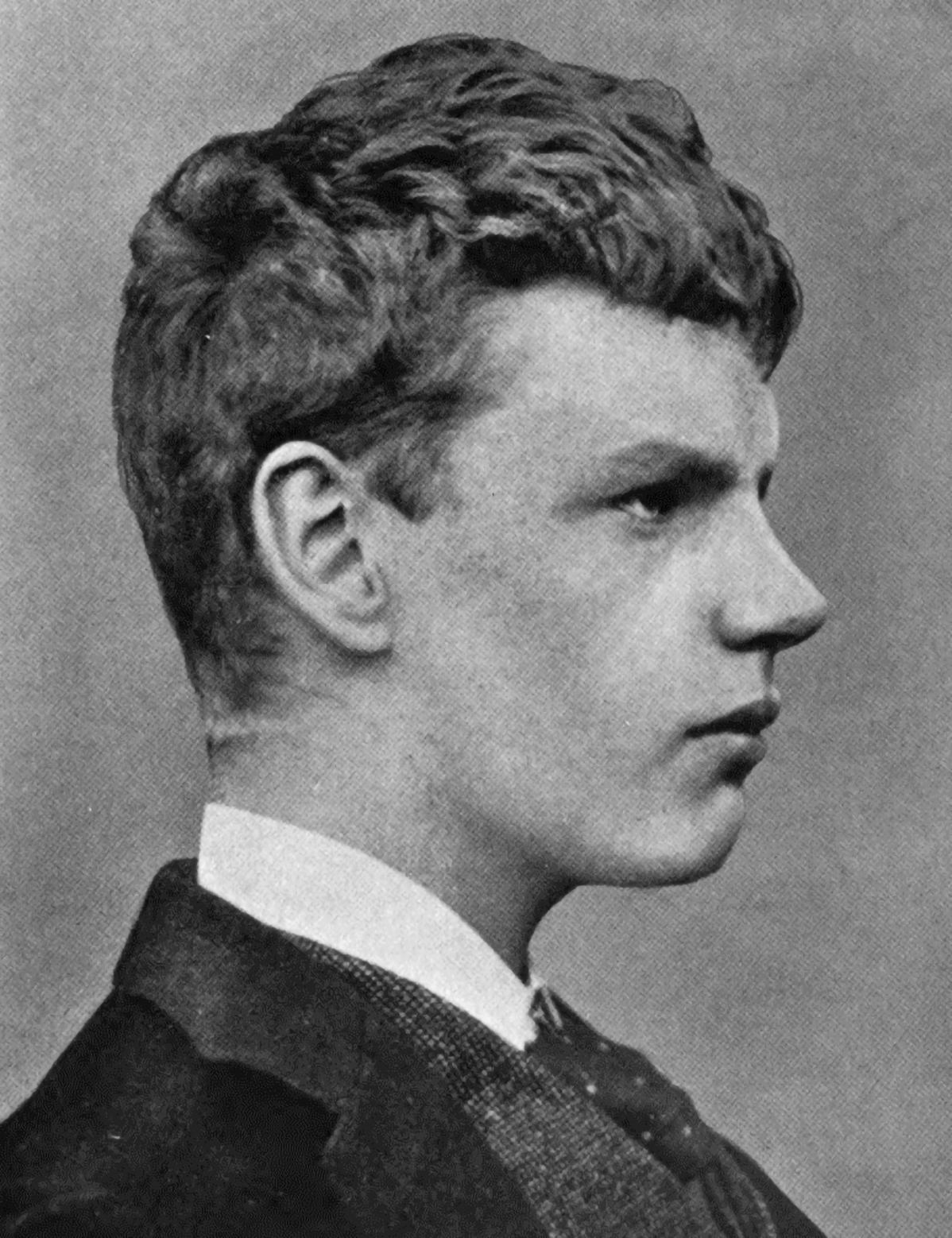
Lunatics and Soldiers
Evelyn Waugh’s Sword of Honor trilogy (1952–1961; recension 1964) is arguably the greatest novel of the 20th century. Where Chesterton’s best novels are ignored but for a small, loyal following, Waugh’s trilogy continues to inspire considerable defensiveness and snobbery (the closest parallel is clearly Tolkien). Its epic scope approaches that of Cervantes. Lathrop informs us that the author of Don Quixote “created 371 characters (230 of whom have speaking roles).” In Waugh, we witness a similarly high level of inventiveness. Our stylistic and thematic concerns return. Lunatics run wild, civilization is in peril, soldiers are on the march. We have satire, parody, and raucous comedy side by side with tragic dignity. Waugh’s trilogy is tragicomic; Don Quixote takes on a tragic dimension in its transcendent vision of humanity. It must be admitted, however, that Waugh, unlike Cervantes, is vulnerable to charges of sentimentality. He was passionately attached to old Catholic England. But the fact of pre-Reformation England is not a fantasy genre. The legacy of Cobbett, Newman, Ruskin, Pugin, and Chesterton—the line of English intellectuals for whom the fact counted—is not an illusion in need of shattering. The sentimental element exists in Waugh, a romantic rejoinder to the unsmiling Inner Party official, much as Burke’s “moral imagination” will generally appeal to the common reader more than to the academic, because the academic lives in abject terror of ridicule.
The Quixote of Sword of Honor is an English Catholic with a long genealogy named Guy Crouchback. “Thirty-five years old, slight and trim,” Guy, when we meet him, is saying his farewell to a parish church in the fictional town of Saint Dulcina delle Rocce, near his family’s Italian villa. The old church houses the bones of “St. Dulcina,” “reputedly a victim of Diocletian.” It also shelters the remains of a soldier. The narrator describes Guy contemplating the inscription and effigy belonging to the tomb of this symbolic figure: “Roger of Waybroke, Knight, an Englishman; his arms five falcons. His sword and one gauntlet still lay beside him.” Roger of Waybroke, with whom Guy feels “an especial kinship,” lived an anticlimactic life. He never fulfilled his quest to fight the Turk in Jerusalem. Instead, he fell in a minor battle in Italy and was adopted by the locals as “il Santo Inglese.” The Spanish critics who accuse their English counterparts of bias may have a point: to the best of my knowledge, no one has noticed the connection between the fictional St. Dulcina and Dulcinea of Toboso, and no one has connected the lost knight-errant to Don Quixote—but there they are, radiating symbolism at the start.
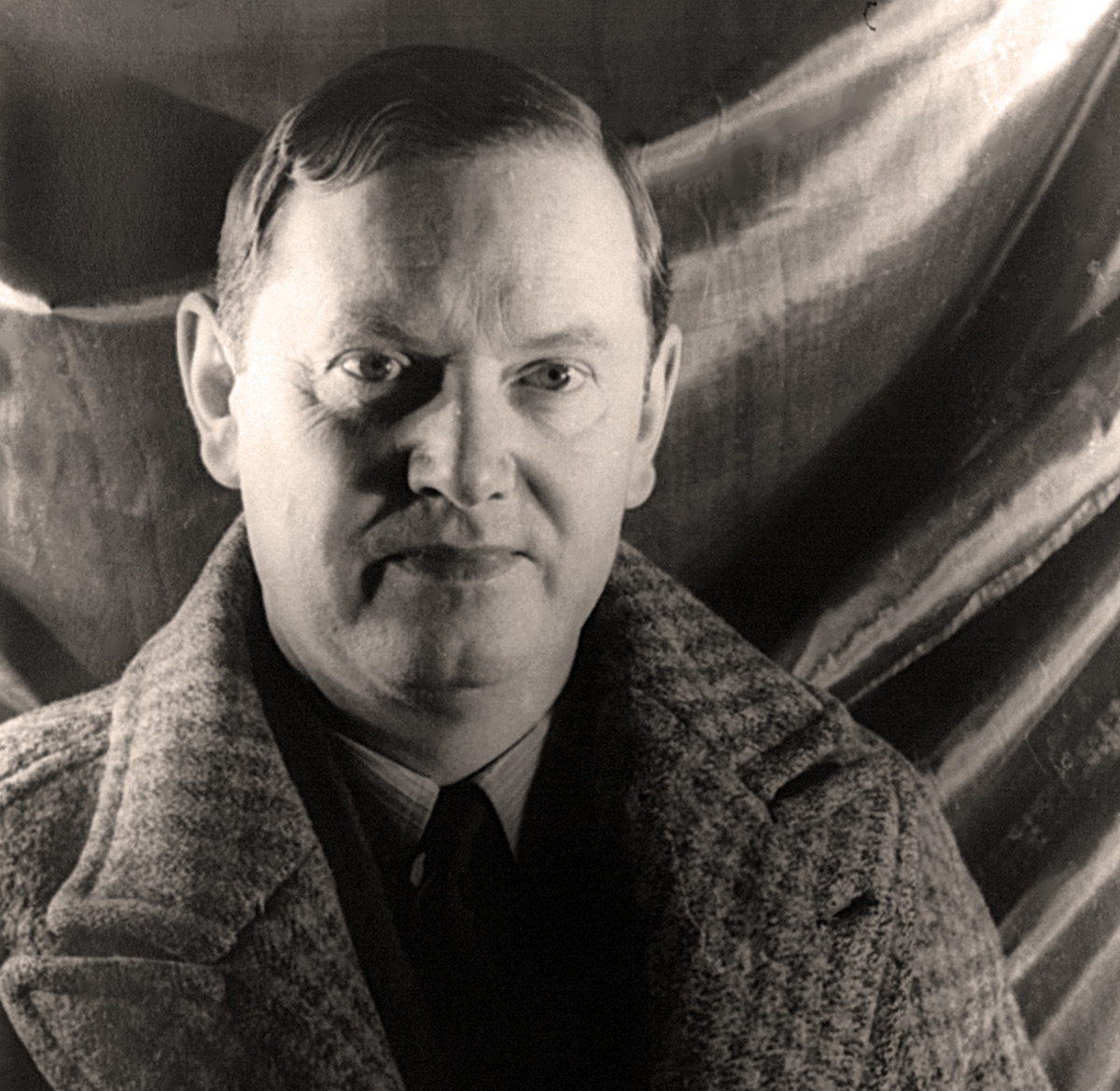
Both Waugh and Cervantes are masters of extended dialogue. In this way they reinforce their panoramic, external perspectives (which extend in Waugh to the surreal), where the body and its follies can compete with the mind and its illusions. Guy is more fool than madman, and more romantic than fool. The chief candidate for Sancho is Apthorpe, a fellow officer whose obsession with his ridiculous “thunder-box” (a portable latrine) calls to mind Sancho’s digestive hijinks—especially when it explodes with Apthorpe sitting on it. The swashbuckling enters through colorfully drawn military figures like Brigadier Ben Ritchie-Hook and the members of “Hookforce.” A good chunk of Sword of Honortakes place in and around the Mediterranean, giving it a multiethnic density in line with Cervantes’ Spain. And when, near the end of the novel, Guy works on saving a Jewish community in Yugoslavia, we are reminded of Cervantes’ heartfelt attention to the plight of the Moriscos.
A Bad Catholic
To keep things within workable bounds, I want to seize on one aspect of Walker Percy’s prophetic satire of 1971, Love in the Ruins: The Adventures of a Bad Catholic at a Time Near the End of the World. As the narrator and wise fool of the novel, Dr. Tom More makes a crucial diagnosis: “it’s the soul of Western man that is in the very act of flying apart HEREand now.” Doc More knows this because he has scientific evidence of the mind’s divorce from the body. He has invented a machine called “More’s Qualitative Quantitative Ontological Lapsometer,” which measures the extent of an individual’s fall from himself, in the direction of angelic detachment or bestial self-indulgence. Cervantes had foreseen this situation in the complementarity of Don Quixote and Sancho, but Cervantes’ knight and squire remain loyal to each other. In More’s post-apocalyptic New Orleans, loyalty is practically nonexistent. It follows that New Orleans’ multiethnic culture is breaking down into its constituent parts, which are violently at odds.
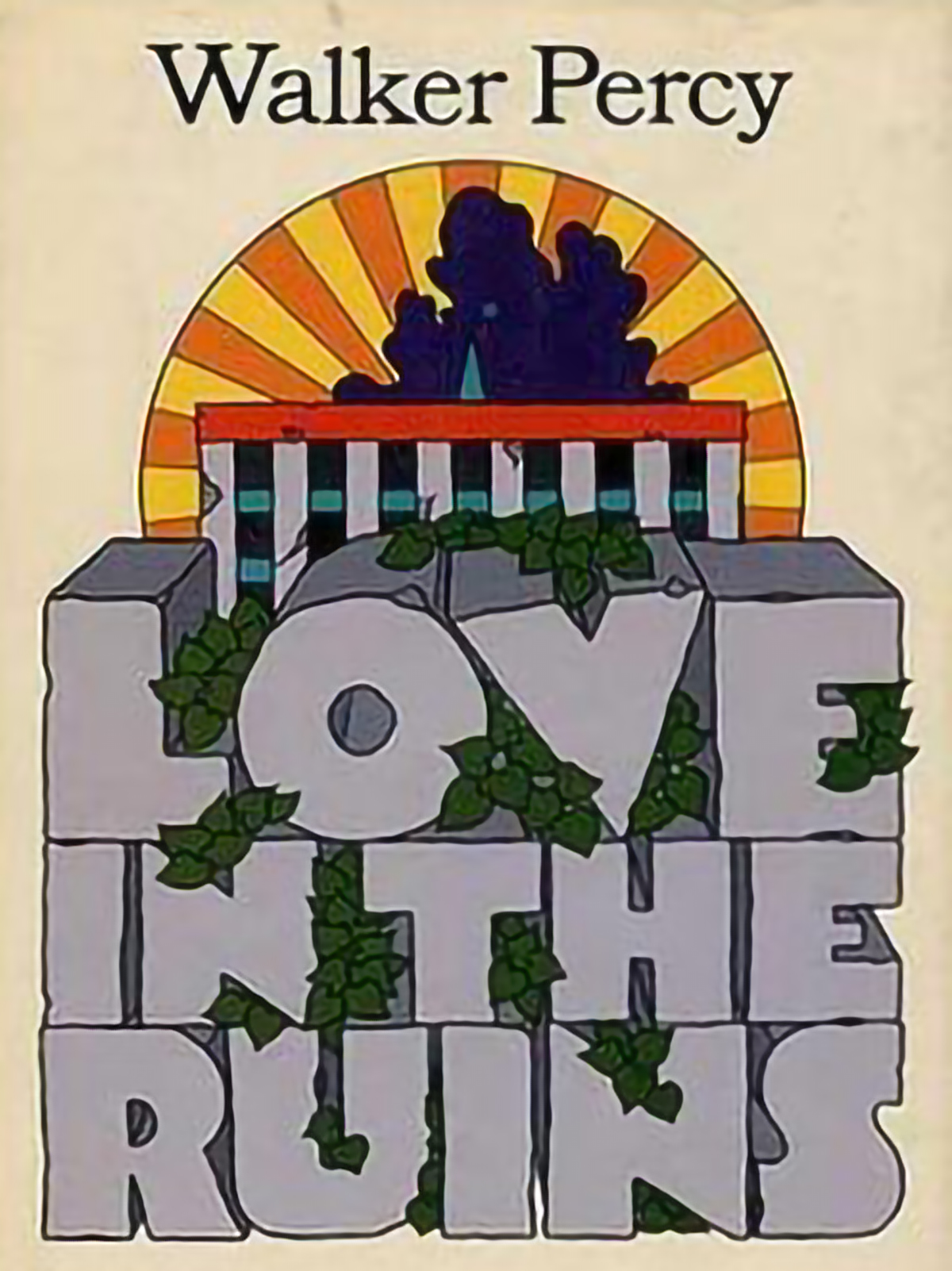
Doc More sticks to a first-person viewpoint, symptomatic of social atomization, but he also offers shrewd psychological studies of his patients. In fact, he is a part-time mental patient himself. Toward the end, after the climactic success of his prayer against his devilish antagonist (“Sir Thomas More, kinsman, saint, best dearest merriest of Englishmen, pray for us and drive this son of a bitch hence”), More finds an Edenic happiness: “I am Robinson Crusoe set down on the best possible island with a library, a laboratory, a lusty Presbyterian wife, a cozy tree house, an idea, and all the time in the world.” This reference to Robinson Crusoe (and a “lusty Presbyterian wife”) in a Catholic novel is striking. Percy was burdened by an acute consciousness of history. His protagonist is, pointedly enough, the namesake of Sir Thomas More, knight, dedicatee of The Praise of Folly, author of Utopia (1516), and Catholic martyr of conscience. At one point, Doc More places himself and his namesake in the select company of Cervantes and those who “do their best work in prison or exile.” Saint Thomas More’s miraculous intercession saves this Catholic novel, and yet Doc More goes on to liken himself to the hero of the first Protestant novel. This is Percy’s game: the healing combination of Catholic and Protestant parallels what Doc More wanted to accomplish through his lapsometer’s diagnoses. Further, this healing process is also evident in Doc More’s attempt to fuse external and internal (or psychological) perspectives. Waugh likewise paid close attention to the mutual health of mind and body, but in Percy’s novel the problem is widespread and desperate.
Doc More sticks to a first-person viewpoint, symptomatic of social atomization.
A Huge Kook
If the swashbuckling in Love in the Ruins, like its sexual mores, suggests the male ethos of ’70s action stars, A Confederacy of Dunces performs its swashbuckling in the guise of a hotdog vendor wearing a pirate’s costume and brandishing a “black plastic cutlass.” Sergeant John Kennedy Toole probably completed the novel as we know it while stationed at Fort Buchanan in Puerto Rico, in the summer of 1963. Toole’s now-immortal Ignatius J. Reilly is Quixote and Sancho combined, the knight’s sallet helmet replaced by a “green hunting cap,” and Sancho absorbed into a cartoon colossus whose mind and body enjoy no equilibrium. I take the name Ignatius to be an ironic reference, though not a hostile one, to St. Ignatius of Loyola, a kind of Quixote in his own right. That Toole captured the magic of New Orleans while situating Ignatius in a third-person narration is a miracle of art, conceived and constructed by genius but founded on scholarship that is still largely unrecognized. And though Ignatius is a “huge kook” who barely manages to escape the mental hospital, he is also, as the vehicle of Toole’s satire, an intellectual champion of the Middle Ages and a well-armed critic of modernity. A parodic knight-errant, he is a would-be resolver of the “crises of our times,” who can be stunningly adroit in his critique of cause-mongering, inane politics, and social pathologies, a class of affairs he wisely assigns to a lack of contact with reality. He is at war with another modern-day Quixote, his love interest, Myrna Minkoff, a sexually liberated Freudian Jew questing in the name of avant-garde liberalism. His hilarious “Journal of a Working Boy” shifts the novel to first-person narration, as do letters between Ignatius and Myrna. Behind his antic genius and comic mimicry of New Orleans types, Toole, like Waugh and Percy, reveals an anthropological concern with balancing the social and individual nature of humanity.
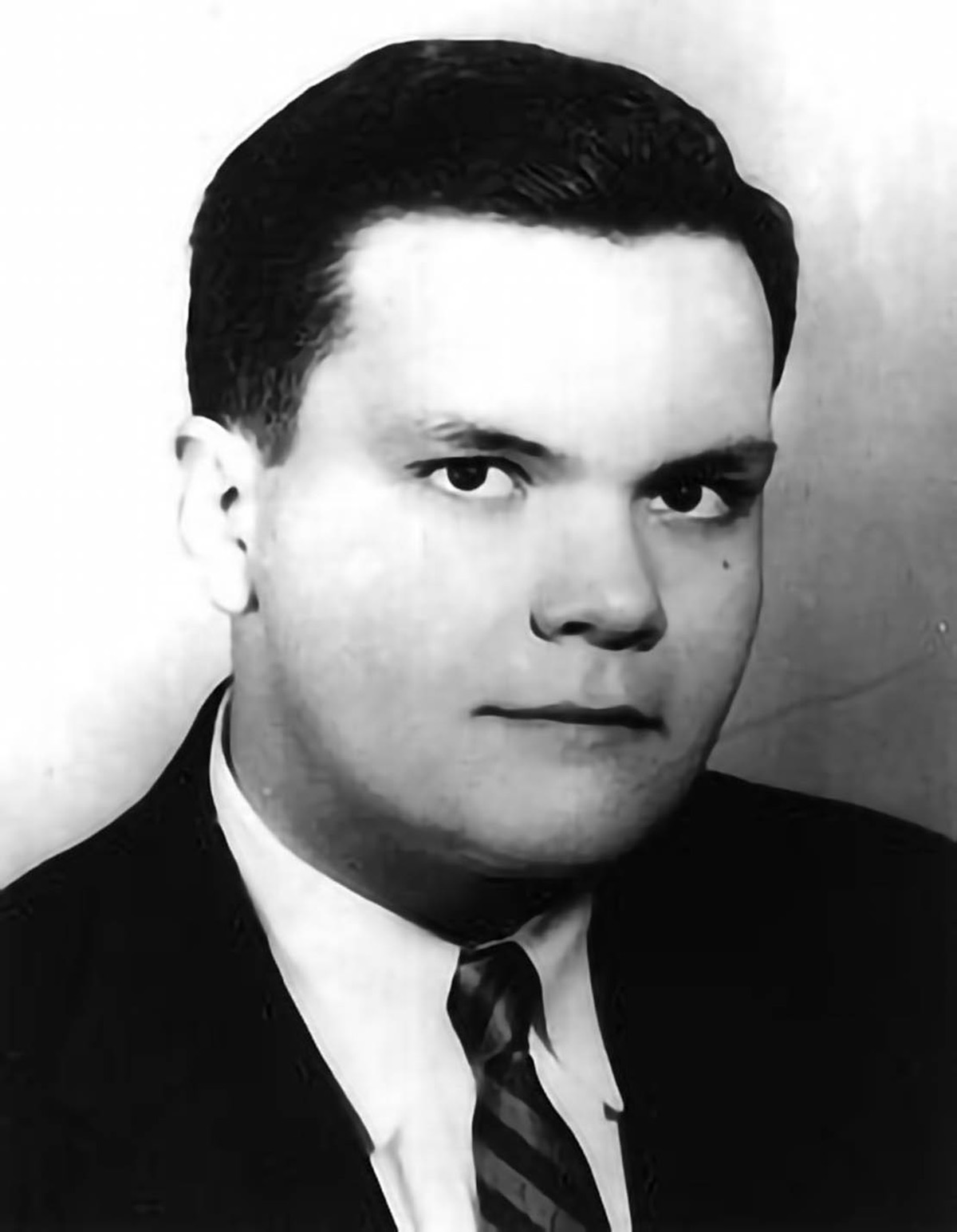
Cervantes’ Legacy Today
By now you are wondering, what of the Catholic novel in more recent times? What survives of the Cervantine spirit that inspired Chesterton, Waugh, Percy, and Toole? Graham Greene’s Monsignor Quixote (1982) resurrects Don Quixote in post-Franco Spain as a goodhearted priest who prefers pastoral to moral theology, and who has the wit to find good and bad on both sides of the Civil War. Monsignor Quixote is a fine work, superbly crafted, but too didactic to channel the Cervantine spirit. More recently still, Trevor Merrill’s debut novel Minor Indignities (2020) observes the sexual and cultural lunacy rampant at Yale College in the 1990s. Merrill is a scrupulous wordsmith who resembles Updike in his absorption of French masters and Tom Wolfe in his critique of the campus scene. It seems fair to place his work in the reactionary movement against postmodern irony (itself an academic habit of mind) that marches under the banner of the New Sincerity. I admire Minor Indignities, as well I should, but its first-person narration succumbs at times to introspective overkill. Merrill will need more narrative invention, and he will need to escape the mind’s constant dialogue with itself, if he is to help revive the tradition of Cervantes.




